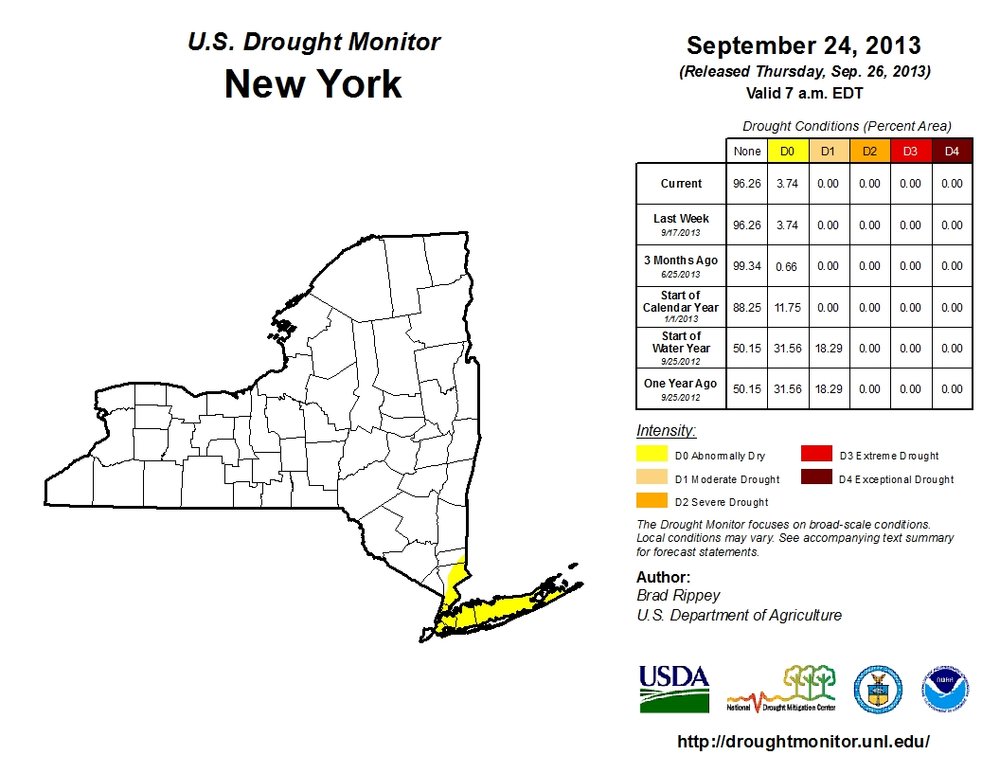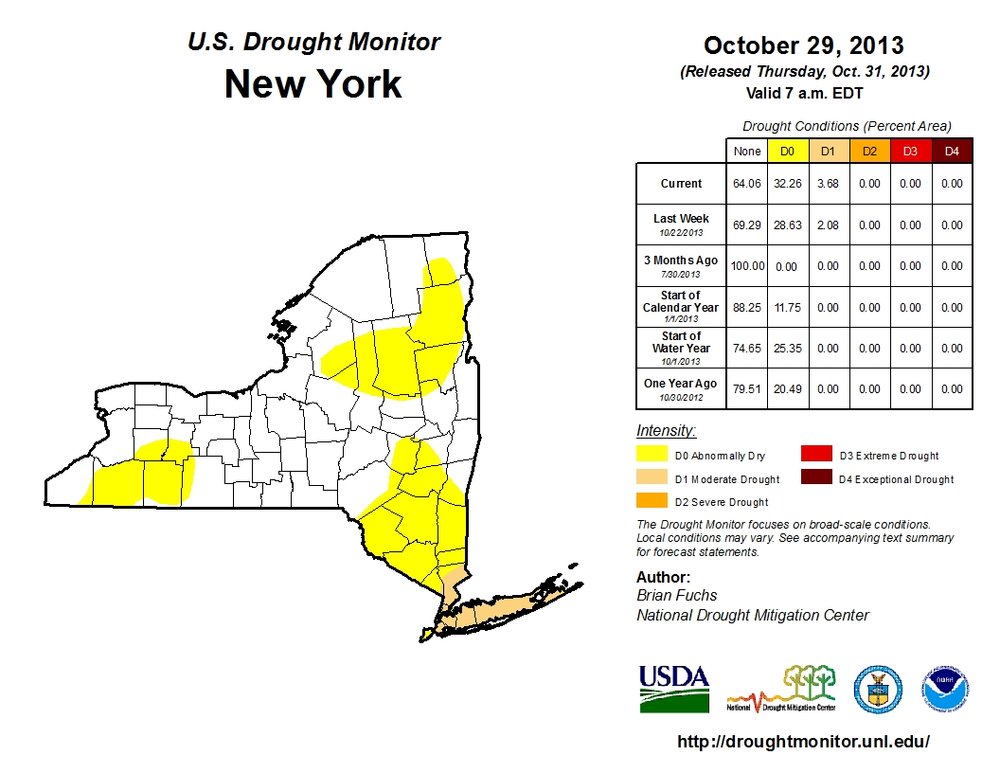Don't put away your hose yet! We're having a meaningful rainfall deficit over the last two months, and plants that are going dormant need to do so in soil that has adequate moisture.
In September we had just over 2" of rainfall - the normal is just over 4".
In October we had 1.6" of rainfall - the normal is 4.5"
In other words, plants are "expecting" an inch of rain per week or thereabouts at this time of year. But they're falling behind. Extremely dry weather this fall is especially problematic for evergreens at a time when water is so critical for their health prior to winter. During the winter, exposed needles and leaves of evergreens are at the mercy of nature as cold winds pull moisture from the leaves. Once the ground freezes, the plant cannot bring any more water in through is roots. If water is lacking within the plant due to an abnormally dry fall season, needles and leaves may die as water is lost during harsh, winter conditions.
So keep the outdoor water on and a hose at the ready, even if your irrigation system has already been winterized. You certainly don't need to water every day, but once or a couple of times per week to make up for the inch of rain per week that the trees are not getting. Especially if they are newly-planted, with a limited root zone going into winter.

